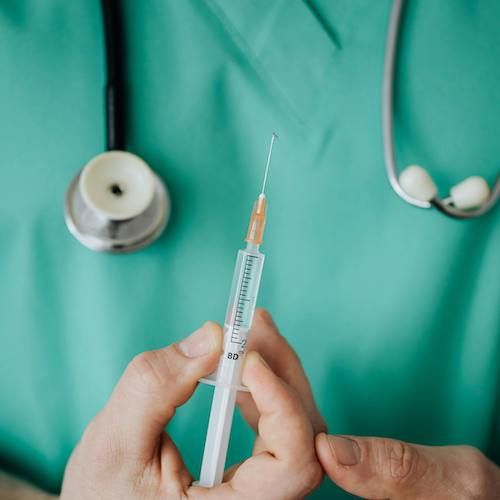News
Article
Sickle Cell Disease May Play Role in Childhood Lead Poisoning Cases
Author(s):
An analysis of NYC’s lead registry data from 2005 to 2019 revealed a potential association between sickle cell disease and childhood lead poisoning.
Leah Seifu, MD, MPH
Credit: LinkedIn

An investigation into New York City (NYC) lead registry data revealed a potential link between sickle cell disease (SCD) and childhood lead poisoning, implicating the public health need for blood lead level (BLL) testing and prevention guidelines for children with SCD.1
The basis for the potential association between SCD and lead poisoning in NYC children, particularly Black children, remained inconclusive, yet the analysis found children with SCD were significantly more likely to engage in pica behavior, a known risk factor for lead exposure.
“If a higher risk for lead poisoning in children with SCD is present, as our data suggest, then it would be important to consider raising awareness among both healthcare providers and caregivers of children with SCD about the potential need for more frequent BLL testing and about addressing behaviors that increase risk for lead exposure,” wrote the investigative team, led by Leah Seifu, MD, MPH, New York City Department of Health and Mental Hygiene.
Notable improvements have been made in childhood lead exposure rates in the US, but disparities continue in those from low-income households, living in older or poorly maintained homes, and those with occupations exposing them to lead.2
Previous NYC-based analyses of lead registry data demonstrated an increased prevalence of SCD among children with hBLLS ≥45 mcg/dL.3 Intermittent cases of lead poisoning in children with SCD have been reported, according to Seifu and colleagues, but SCD is not typically considered a risk factor for lead poisoning.4
Using the NYC Department of Health and Mental Hygiene (DOHMH) lead registry, investigators evaluated the association between SCD and lead poisoning by analyzing BLL testing data for children aged 0 to 17 from 2005 to 2019, searching for venous BLLs ≥15 mcg/dL.1 During that period, the DOHMH was required by law to investigate cases of lead poisoning among children <18 years old with venous BLLs ≥15 mcg/dL.
A total of 1728 non-Hispanic Black children were identified in the lead registry with BLLs ≥15 mcg/dL from 2005 to 2019, of which 37 (2.14%) children had SCD. Seifu and colleagues found mean age at peak BLL was higher for children with SCD (62.8 vs. 42.7 months; P = .003) than for those without SCD.
Initial BLLs for children with SCD and children without SCD were not significantly different (11.30 mcg/dL vs. 11.79 mcg/dL; P = .86), but children with SCD exhibited significantly higher peak BLLs (42.59 mcg/dL vs. 23.06 mcg/dL; P = .008).
Analysis of risk factors for lead exposure revealed significant differences comparing Black children with and without SCD for those reported in the parental questionnaire to be chewing nonfood items (41.4% vs. 10.3%; P <.001), eating soil, paint, or clay (44.8% vs. 15.4%; P <.001), and children with nursing notes documenting pica (60% vs. 18.6%; P <.001).
Seifu and colleagues observed a statistically significant difference (P <.001) between the prevalence of SCD in Black children with BLLs ≥15 mcg/dL (2.14%) and the estimated prevalence of SCD among Black children in NYC overall (0.43%).
Based on these data, investigators indicated their plan to analyze further BLL data using SCD results from the New York State Newborn Screening Program, allowing for more accurate SCD classification, a larger pediatric SCD cohort, and multivariable analyses of all racial and ethnic groups.
“This investigation could have public health implications for childhood BLL testing and lead poisoning prevention guidelines,” they wrote. “However, further research is needed to understand this potential association more fully.”
References
- Seifu L, Sedlar S, Grant T, Faciano A, Ehrlich J. Sickle Cell Disease and Lead Poisoning in New York City, 2005-2019. Pediatrics. 2024;154(Suppl 2):e2024067808G. doi:10.1542/peds.2024-067808G
- COUNCIL ON ENVIRONMENTAL HEALTH. Prevention of Childhood Lead Toxicity [published correction appears in Pediatrics. 2017 Aug;140(2):e20171490. doi: 10.1542/peds.2017-1490] [published correction appears in Pediatrics. 2020 Jun;145(6):e20201014. doi: 10.1542/peds.2020-1014]. Pediatrics. 2016;138(1):e20161493. doi:10.1542/peds.2016-1493
- Keller B, Faciano A, Tsega A, Ehrlich J. Epidemiologic Characteristics of Children with Blood Lead Levels ≥45 μg/dL. J Pediatr. 2017;180:229-234. doi:10.1016/j.jpeds.2016.09.017
- About childhood lead poisoning prevention. Centers for Disease Control and Prevention. May 23, 2024. Accessed October 2, 2024. https://www.cdc.gov/lead-prevention/about/index.html.





